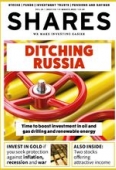Archived article
Please note that tax, investment, pension and ISA rules can change and the information and any views contained in this article may now be inaccurate.
What is the Vix ‘fear index’ and why does it matter to investors?

The Vix is often called ‘the fear index’ and if you have ever wondered what different readings mean this article is for you.
Before getting to the details, it is worth explaining the difference between uncertainty and risk because it is more than just semantics.
Investment is all about managing risk. It can be calculated when all known possible outcomes and their likelihood can be identified. Analysts often use this type of risk analysis.
For example, let’s say a pharmaceutical company expects next year’s earnings to grow 20% if it gets a new drug approved, but only 5% if approval is denied.
Using trial data already in the public domain, an analyst makes an educated guess there is a 55% chance of success.
This allows a risk adjusted calculation to be made. The probability of success is multiplied by the best-case scenario and the probability of failure is multiplied by the worst case.
In other words, best case 20% x 0.55 + worst case 5% x 0.45 which equals 11% + 2.25% for a result of 13.25%.
This approach is not perfect, but it does allow investors to manage risk and quantify expectations.
Uncertainty is a completely different beast and means not all possible scenarios are knowable or there is low confidence in their likelihood.
War is uncertain in every way. Even if all the economic ramifications are known, attaching sensible probabilities to them is a fruitless task.
The Vix index is designed to capture uncertainty. The higher the Vix, the greater the jumpiness in share prices.
It is calculated from options pricing and is the expected volatility (fluctuation) of the S&P 500 index of US shares over the next month. It is custom to quote volatility on an annualised basis.
To convert the Vix to a daily basis it is divided by 15.87, which is the square root of the number of business days in a year.
A Vix of 15 means investors should expect daily changes of 0.94% in the S&P 500 index (up or down) on average over the next month.
Historically the Vix has averaged around 15 and in times of stress like the pandemic it surged to 80, implying investors expected daily moves in the S&P of 5% (80/15.87).
The Vix responds to events rather than leading them. Think of it like people rushing to buy house insurance after their home has burnt down.
Periods of high volatility can be scary, but they usually don’t last because investors respond to uncertainty by reducing exposures and buying protection. This is the reason the Vix spikes.
Long-term investors often use heightened volatility to their advantage to pick up shares they like at knock-down prices.

Important information:
These articles are provided by Shares magazine which is published by AJ Bell Media, a part of AJ Bell. Shares is not written by AJ Bell.
Shares is provided for your general information and use and is not a personal recommendation to invest. It is not intended to be relied upon by you in making or not making any investment decisions. The investments referred to in these articles will not be suitable for all investors. If in doubt please seek appropriate independent financial advice.
Investors acting on the information in these articles do so at their own risk and AJ Bell Media and its staff do not accept liability for losses suffered by investors as a result of their investment decisions.
Issue contents
Editor's View
Feature
Great Ideas
- Tharisa shares hit new record high as metal prices rally
- Why Hill & Smith’s share price has fallen too far
- Fancy 9% dividend yield? M&G is the answer
- Hargreaves Services delights investors by raising its full year outlook again
- Buy this Canadian fund for income and exposure to attractive sectors
- Don’t panic about drop in Heptagon European fund
News
- Quality growth strategy delivered strong returns in 2021 for Smithson
- Sanctions create potential earnings boost for non-Russian potash producers
- Mike Ashley increases Frasers’ stake in German fashion retailer Hugo Boss
- Why global shares could receive a major boost from large pension fund rebalancing
- Investors in China should brace for even greater volatility as risks multiply

 magazine
magazine








